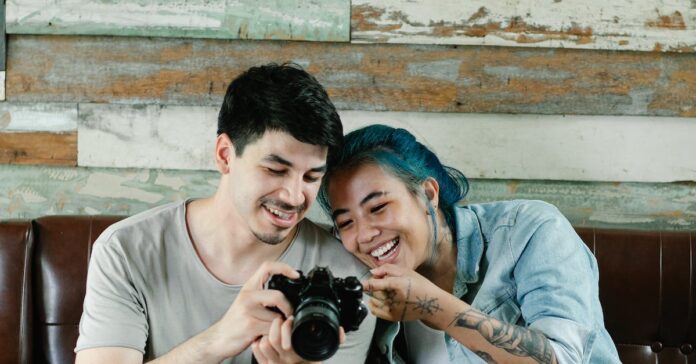Whether you take one picture every few years or take dozens a day, you may be wondering how you can make your pictures more impressive. Here, we’ll give you a handful of suggestions to make your pictures stand out more, be more clear and capture exactly what you’re seeing and want to capture on film.
If you are planning to take pictures outside, reevaluate the lighting every 10 minutes, as lighting is constantly changing. Adjust your angle to get the best possible shot and illuminate the features that you are trying to highlight. Planning in advance is very important for producing quality photos.
Pay attention to your light. The lighting in a photograph can bring a subject into better focus or change the mood of the picture. Different lighting setups will result in very different photographs. Avoid harsh direct lighting on your subject’s face, as this will generally cause them to squint.
Use the right lens for the job. If you are photographing a landscape, for example, you need a wide-angle lens that will let you capture as much of the scene as possible, while sporting events generally require a telephoto lens that let you capture faraway players in high detail. Knowing what lens to choose will make it much easier to produce quality photos.
When taking a picture, try to take one at a medium distance and then take one closer. You may decide later on that a picture would have looked better had you taken it a little closer. Also, try to make sure your subject is toward the center of the picture.
Use a rather low ISO. A good ISO is around 200. Using this range of ISO will make your pictures look dark in certain situations, but you can easily change the contrast and light on a computer. If you use a higher ISO, you will get a lot of noise on your picture, which makes editing harder.
Learn how to use aperture on your camera. It indicates how much of the stuff that is seen in your view finder will be in focus. Low aperture means that only the foreground will be in focus and the background will be more blurred. High aperture means that everything will equally be in focus.
Be ready to take a picture at all times. This does not mean you should have your camera in hand, this means you should be in the proper state of mind all the time. Look at the world as if you were seeing it through your camera. When you see something interesting, take a picture.
Take lots of shots. Using a digital camera allows you to take essentially an infinite number of photos for free. The more shots you take, the better your chances are of capturing that perfect moment. If your shot didn’t come out like you wanted, try again with different settings. You won’t learn if you don’t try.
Less is always more in photo composition. You should not add too much to your pictures, or you will run the risk that they will look cluttered. When photographing people, try to take shots that your subjects aren’t aware of.
Pay careful attention to backgrounds when composing your photographs. Jumbled, messy rooms can ruin an image and prevent your subject from standing out. Also, even the smallest item within range of the snapshot can be a distraction, taking away from the central focus. Always make a quick scan of the room or landscape, then remove items that will detract from an otherwise perfect shot.
Don’t just rely on straight on flash from your camera for your shots. That only guarantees a burst of frontal lighting. Get a little more creative and try to create soft lighting conditions. How do you do that with flash, you ask? You can do that by bouncing your flash off of a wall or ceiling.
To get a great photo, make sure your subject fills the frame. Too much empty space will distract the viewer, and they will not know what they are meant to be focusing on. A tight crop on your subject will direct the eye and show more details that will transform your image into a story.
Keep an eye out for all kinds of natural geometry when taking pictures. Pay special attention to any “lines” that your eye can pick up on in the area or on the subject that you will be shooting. Find the “line” and use it to take a good shot.
With these suggestions in hand, start looking at your most recent photographs and see if these tips would have made the pictures even better. If you start noticing that there is a suggestion or two that would greatly improve a few of the photographs you’ve already taken, try finding a way to incorporate that suggestion into every photograph you take from now on.

